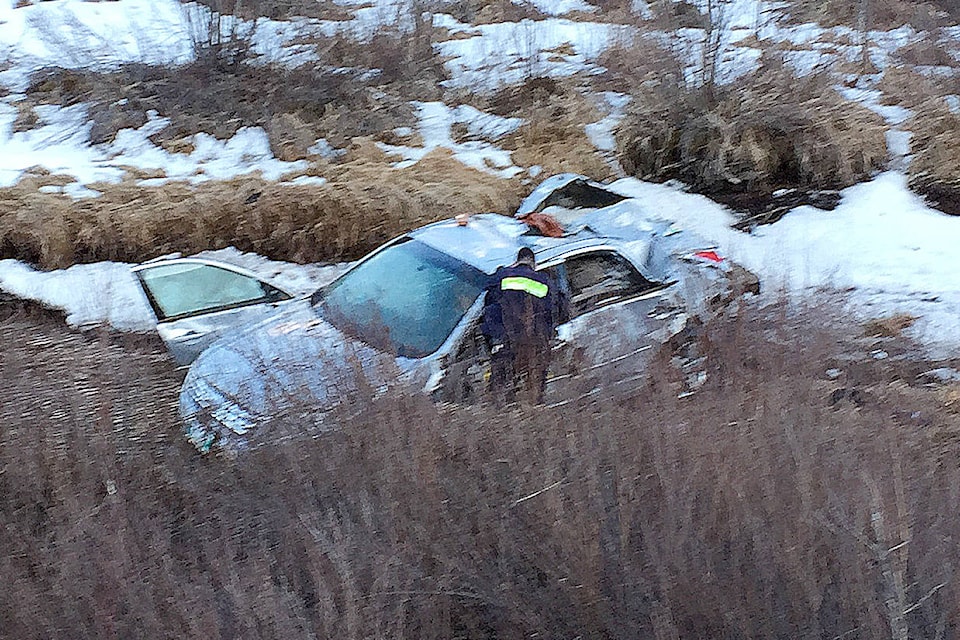By Keith McNeill
Thompson-Nicola Regional District is taking control of the remaining independent fire departments within its boundaries.
Similar changes are happening with other regional districts and fire departments across the province, mostly due to liability concerns.
READ MORE: New highway rescue truck brings new capabilities (May 9, 2013)
READ MORE: Pickup goes off highway (Jan. 29, 2017)
Could the same thing happen to highway rescue societies, such as Clearwater and District Road Rescue?
According to a recent letter to the TNRD from Firewise Consulting, Emergency Management BC (EMBC) has provided funding to the Fire Chiefs Association of BC (FCABC) to research and develop a proposed framework to provide governance for the provision of road rescue within the province.
The letter points out that there is no legislated requirement to supply a road rescue service in support of BC Ambulance Service, BC Coroner Service and the RCMP, who do have a provincial mandate to provide services.
EMBC assumes no responsibility for establishing road rescue services. It does, however, provide some operational cost recovery to road rescue providers.
Many municipalities, regional districts, and improvement districts provide road rescue services and fund them through local taxation. Sometimes the providers are fire departments, in other areas they are rescue societies or search and rescue groups.
The letter asks for comments on the oversight, administration and provision of road rescue in the rural areas of the province from the elected officials involved.
Local road rescue group has long history
Mike Savage of Clearwater and District Road Rescue Society (CDRRS) said that he is not aware of anyone contacting the society in regards to the letter.
He said he would like to review the letter with the society before giving any comment, but did provide some background information.
CDRRS has been providing services for the community and surrounding area since 1975, he said.
The society has its own board of directors, liability insurance plus truck and equipment insurance.
Training standards and equipment all meet the Worksafe BC and National Fire Protection Association (NFPA) requirements.
CDRRS is a non-profit volunteer society. EMBC provides task claim funds at the provincially established rate for each call at a $330 per hour for the truck and crew.
The society has two trucks, one based in Blackpool and the second in Blue River. Its trucks do not respond to a call without an approved EMBC task number.
Annual training tasks are applied for each year outlining monthly and special training.
CDRRS provides road rescue response for the Highway 5 corridor from south of Little Fort to just south of Valemount and all the logging roads in between.
The society’s roster has about 20 volunteers ready to answer the call.
Savage felt that road rescue is underfunded and does not receive the same amount that the volunteers deserve. He pointed out that the responders are on call 24/7, 365 days a year and receive no pay.
The volunteers have to extricate injured and deceased victims from crashes.
“This has taken its toll on many volunteers over the years and is not for everyone,” Savage said. “Recruiting is difficult and retention of volunteers is critical.”
He added that fundraising to replace trucks and equipment is an ongoing challenge.
“Many think the government funds this and they don’t,” he said.
newsroom@clearwatertimes.com
Like us on Facebook and follow us on Twitter
